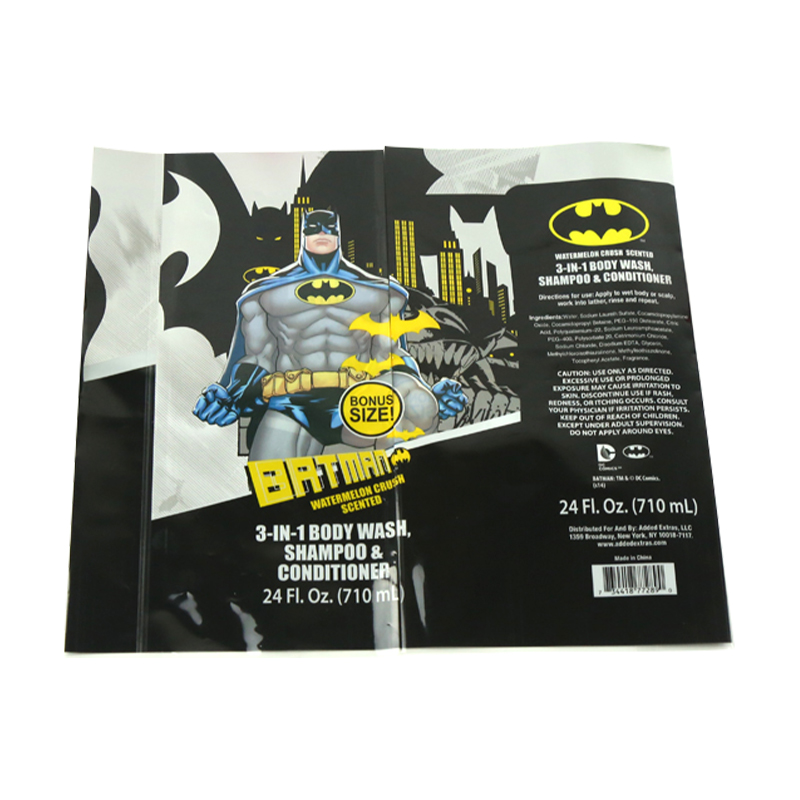2025-07-24
In the competitive world of consumer goods packaging, innovation is key to capturing attention, ensuring product safety, and reinforcing brand identity. One technology that has been gaining prominence is the use of PET thin film outer packaging shrink film labels. These labels offer a versatile, durable, and visually striking solution for manufacturers aiming to enhance packaging aesthetics while providing reliable protection.
What Are PET Thin Film Outer Packaging Shrink Film Labels?
PET (polyethylene terephthalate) thin film outer packaging shrink film labels are flexible, heat-shrinkable films applied to the outer surface of product containers and packages. When exposed to controlled heat, the film shrinks tightly around the product, conforming seamlessly to its contours. This creates a sleek, tamper-evident, and 360-degree printable surface, enabling vibrant graphics and consistent branding coverage.
These films are ultra-thin yet robust, providing a high degree of clarity and glossiness, which enhances the overall presentation of the product. PET as a material is known for its strength, chemical resistance, and recyclability, making it an increasingly choice for shrink labels.
Key Advantages of PET Thin Film Shrink Labels
360-Degree Branding Opportunity: Unlike traditional labels, shrink film labels wrap around the entire package, offering a larger canvas for detailed graphics, product information, and branding elements.
Visual Appeal: PET thin films have clarity and gloss, elevating the packaging's look with vibrant colors and a finish that attracts consumers.
Durability and Protection: These shrink labels protect against scratches, moisture, and abrasion, preserving label integrity throughout distribution and shelf life.
Tamper Evidence and Security: When properly applied, shrink labels act as tamper-evident seals, helping to safeguard products and build consumer trust.
Environmental Considerations: PET films are recyclable and compatible with various recycling systems, aligning with growing sustainability trends.

Applications Across Industries
PET thin film shrink labels have broad applicability, particularly where product aesthetics and protection are critical:
Beverage Industry: Bottled water, soft drinks, juices, and alcoholic beverages use shrink labels to achieve seamless, full-body decoration with vibrant branding.
Personal Care and Cosmetics: Products like shampoos, lotions, and skincare items benefit from the label’s flexibility to fit unique container shapes while maintaining appearance.
Food Packaging: Snack packs, sauces, and ready-to-eat meals leverage shrink labels for tamper evidence and eye-catching shelf presence.
Household and Cleaning Products: Durable shrink films protect labels on detergent bottles and other household chemicals from moisture and abrasion.
Technological Innovations
Advances in PET shrink film technology continue to enhance their functionality and appeal:
Ultra-Thin Films: Development of thinner films reduces material usage and cost without compromising strength or print quality.
High-Resolution Printing: Compatibility with digital and flexographic printing enables intricate, multi-color designs and variable data printing.
Barrier Properties: Incorporation of coatings and treatments improves resistance to UV light, moisture, and chemicals.
Sustainable Materials: Use of recycled PET (rPET) and innovations in biodegradable coatings support environmental goals.
Challenges and Industry Solutions
Despite their benefits, PET thin film shrink labels face some industry challenges:
Application Requirements: Precise heat and equipment control are necessary during the shrinking process to avoid label distortion or damage.
Recycling Complexity: Although PET is recyclable, combining shrink films with other materials or adhesives can complicate recycling efforts.
Cost Considerations: High-quality PET films and advanced printing can increase packaging expenses, requiring careful cost-benefit analysis.
Manufacturers and converters are addressing these challenges by refining application technologies, developing mono-material structures to improve recyclability, and optimizing production workflows.
Market Trends and Future Outlook
The demand for PET thin film shrink labels is expected to grow alongside trends emphasizing product differentiation, brand storytelling, and sustainable packaging. Increasing consumer preference for visually engaging and tamper-evident packaging will further drive adoption.
Integration with smart packaging technologies such as QR codes or NFC tags printed directly on shrink films will provide interactive consumer experiences and enhance supply chain traceability.